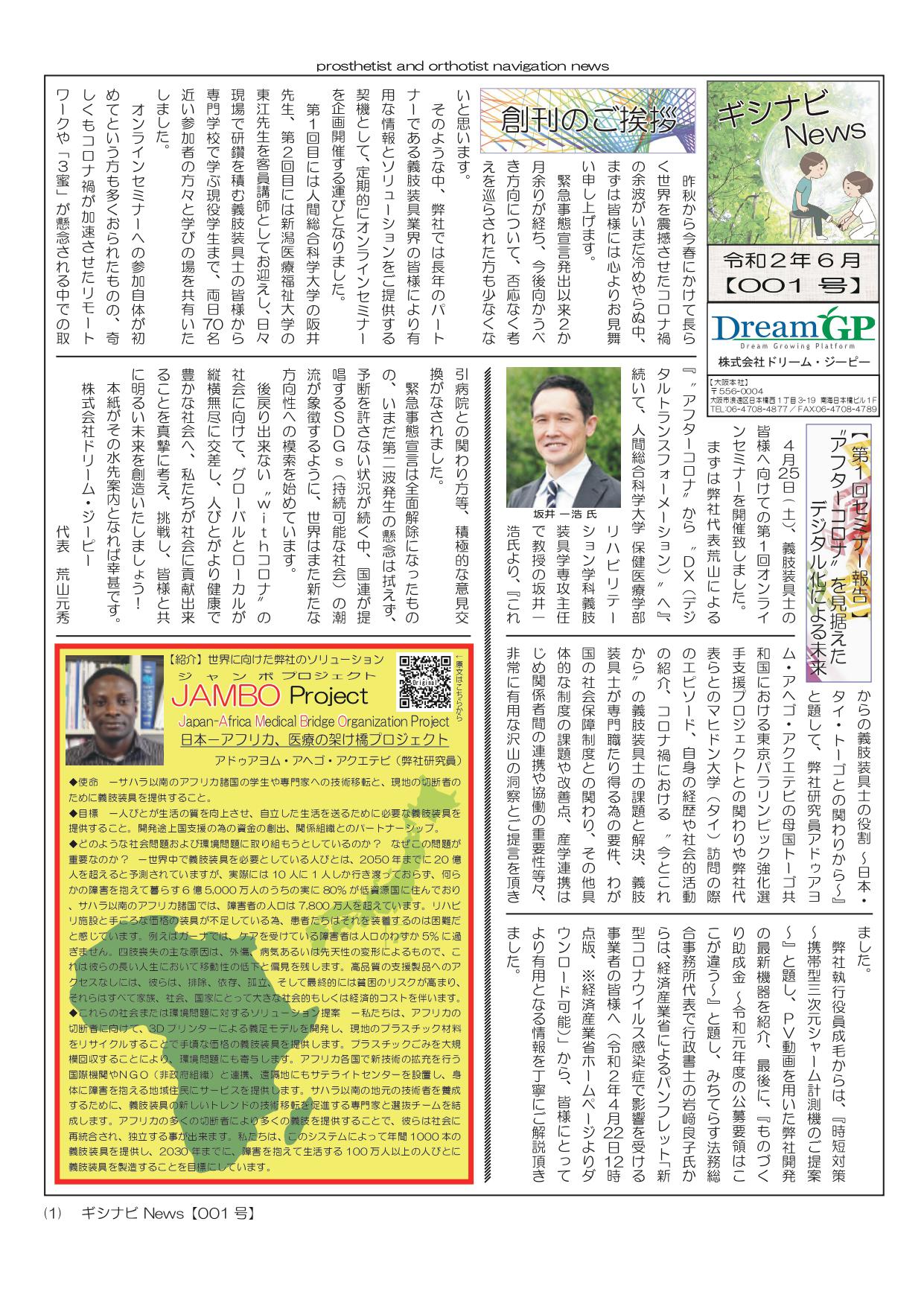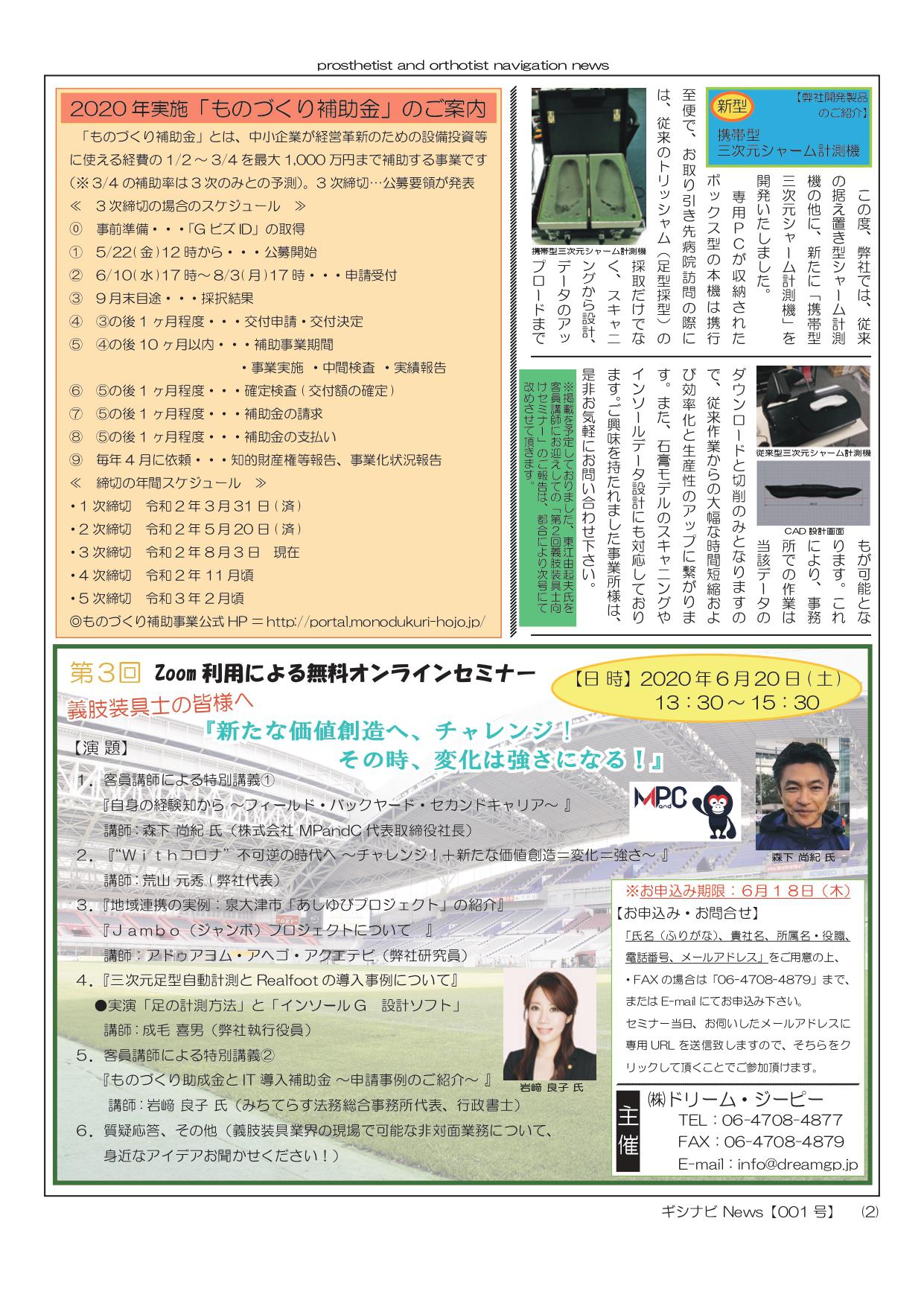ギシナビNews【創刊号】
2020/06/10


JAMBO: Japan-Africa Medical Bridge Organization Project
Akouetevi Aduayom-Ahego,PhD
(Research and Development Division Researcher of Our company)
◆Mission
To provide prostheses for people with amputations and technology transfer for students and professionals in the sub Saharan Africa countries.
◆Objectives
Provide prosthesis and orthosis for people in needs in order to live quality of life independently. Generate funds or partnership with organizations to sponsor prosthesis in developing countries.
◆What social or environmental problem/s is the initiative trying to address? Why is this problem important?
People in need of assistive devices globally will be beyond two billion by 2050 and only one in 10 could get access to assistive product. Of the 650 million people worldwide living with some form of disability, 80% live in low resource countries. In sub-Saharan African, the population of disabled people is beyond 78 million. Due to lack of rehabilitation facilities and its affordability, the patients find it difficult to be fitted with prosthetic devices. In Ghana for instance only 5% of population of disability receive care. Major limb loss is due to trauma, diseases or congenital deformations. This leaves the patients with long life reduced mobility and stigma. Without access to high-quality assistive product, people with amputation are at high risk for exclusion, dependence, isolation and, ultimately, poverty, all of which entail great social and economic costs for families, society and the country.
◆Proposed solution to the above social or environmental problem
We are developing a 3D printing prosthesis model for African amputees in which we will recycle the plastic materials locally in Africa to provide affordable prosthesis. We will collect in a bigger scale the plastic garbage, thus cleaning the environment. We will collaborate with international institutions and non-governmental organizations for expansion of the new technology in all Africa countries and establish satellite centers in remote areas in order to serve locally populations living with physical disabilities. We will form an expert and elite team to foster and boost the technology transfer of the new trends of prosthetics and orthotic service in sub-Saharan Africa in order to train local technicians. By providing several prostheses for many amputees in Africa, they will be socially reintegrated and become independent. The system will provide 1000 artificial legs per year and our target is to manufacture prosthesis for more than one million people living with disability by 2030.
2022/01/11
ギシナビNews【第20号】2021/12/28
ギシナビNews【第19号】2021/11/19
ギシナビNews【第18号】2021/10/05
ギシナビ News【第17号】2021/09/06
ギシナビNews【第16号】2021/08/05
ギシナビNews【第15号】2021/07/06
ギシナビNews【第14号】2021/06/14
ギシナビNews【第13号】2021/05/07
ギシナビNews【第12号】2021/04/06
ギシナビNews【第11号】2021/03/05
ギシナビNews【第10号】2021/02/05
ギシナビNews【第9号】2021/01/05
ギシナビNews【第8号】2020/12/08
ギシナビNews【第7号】2020/11/05
ギシナビNews【第6号】2020/10/05
ギシナビNews【第5号】2020/09/07
ギシナビNews【第4号】2020/08/05
ギシナビNews【第3号】2020/07/06
ギシナビNews【第2号】2020/06/10
ギシナビNews【創刊号】
